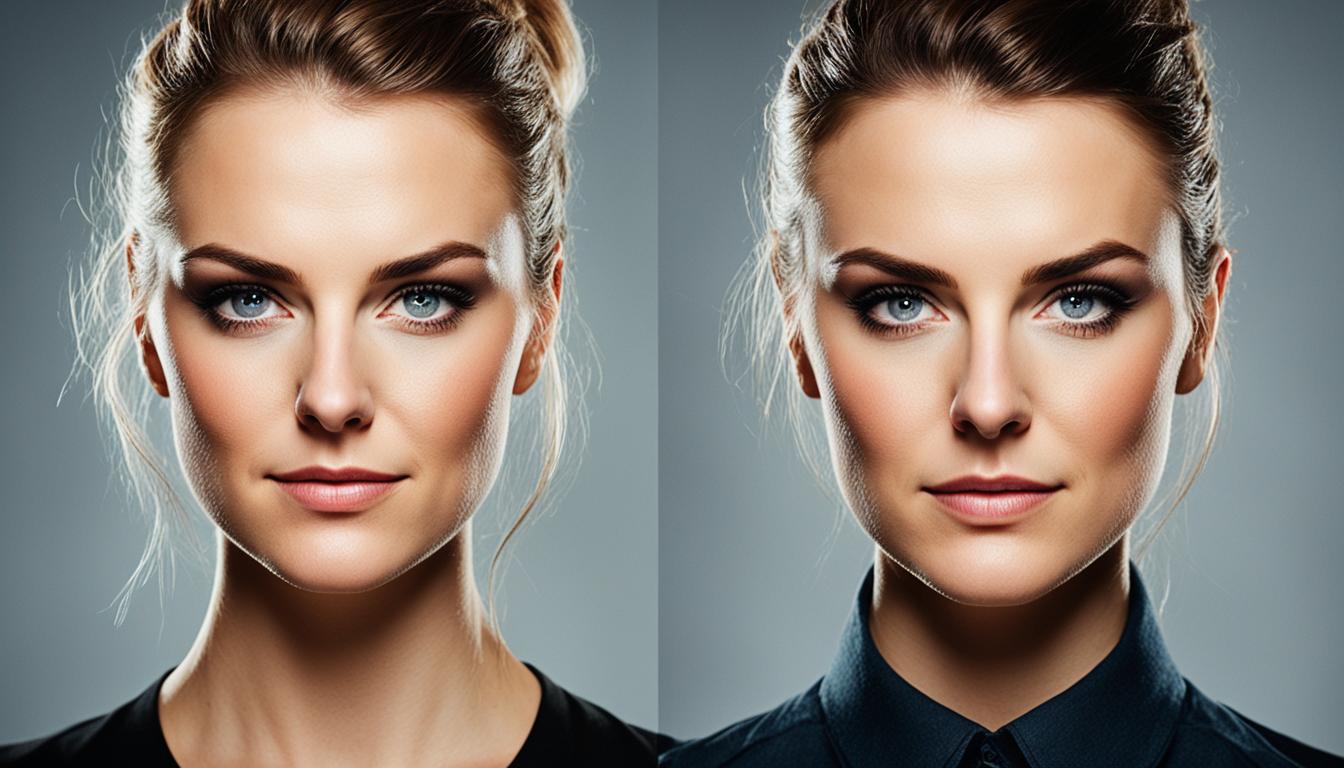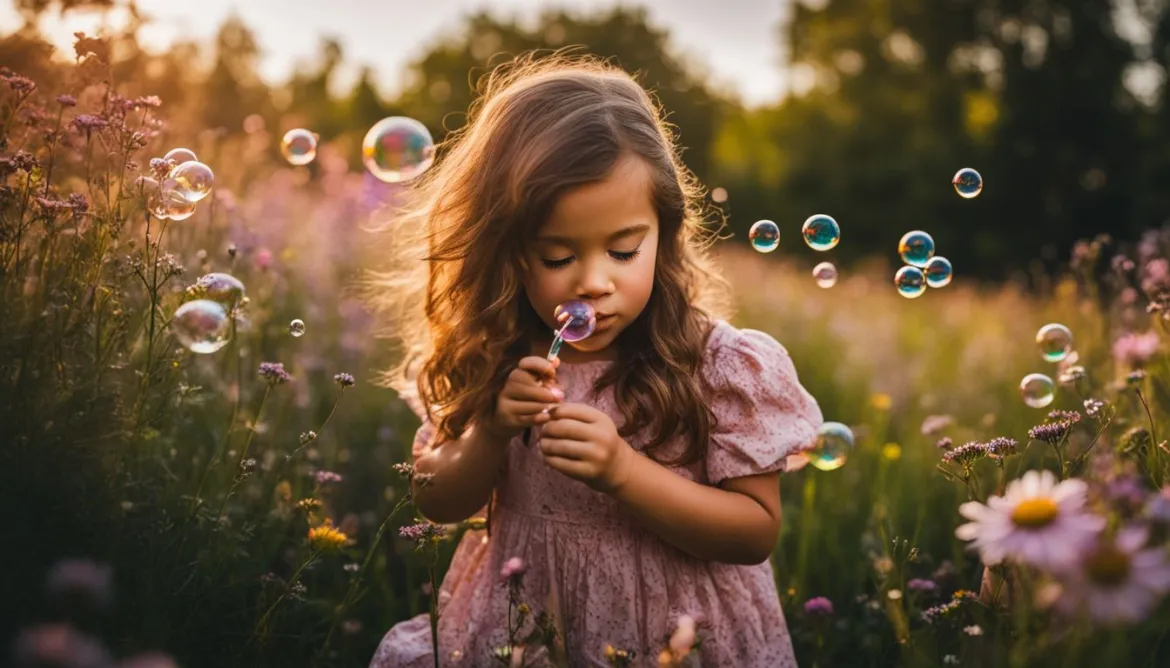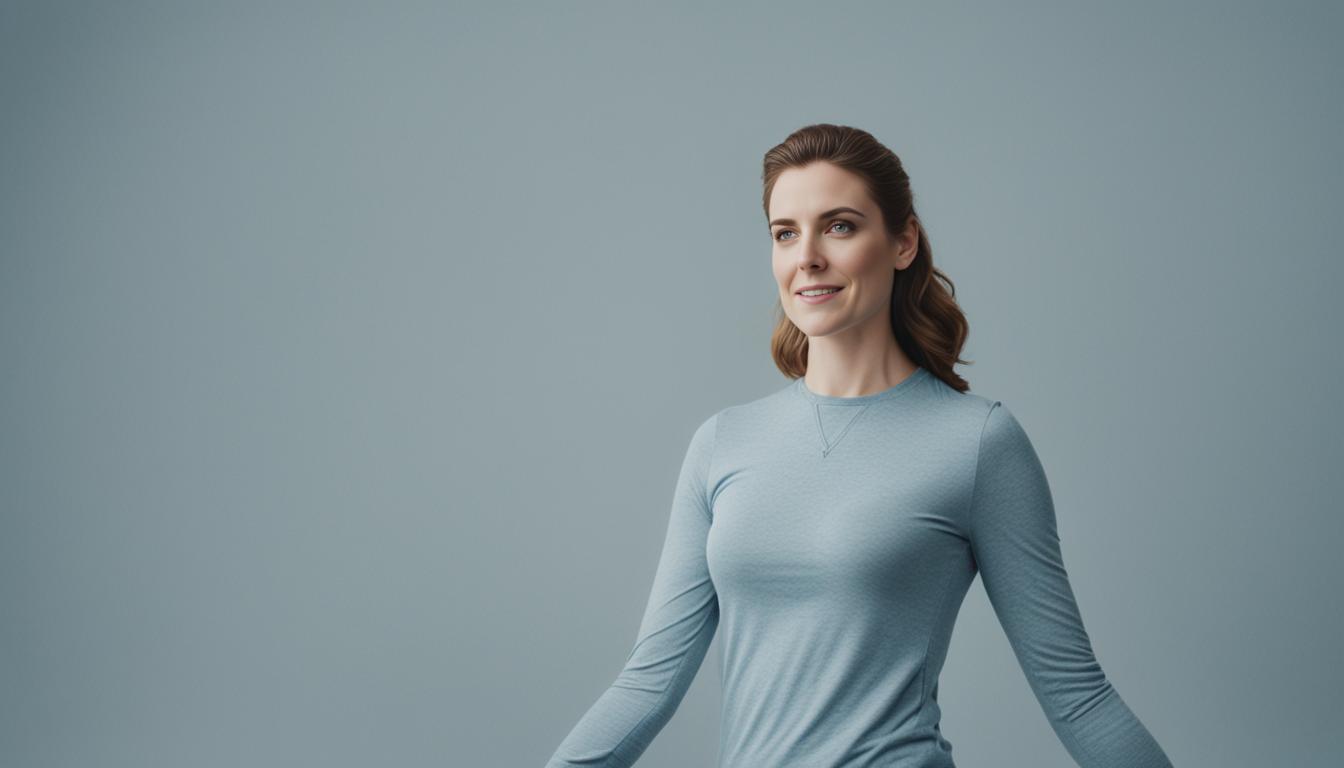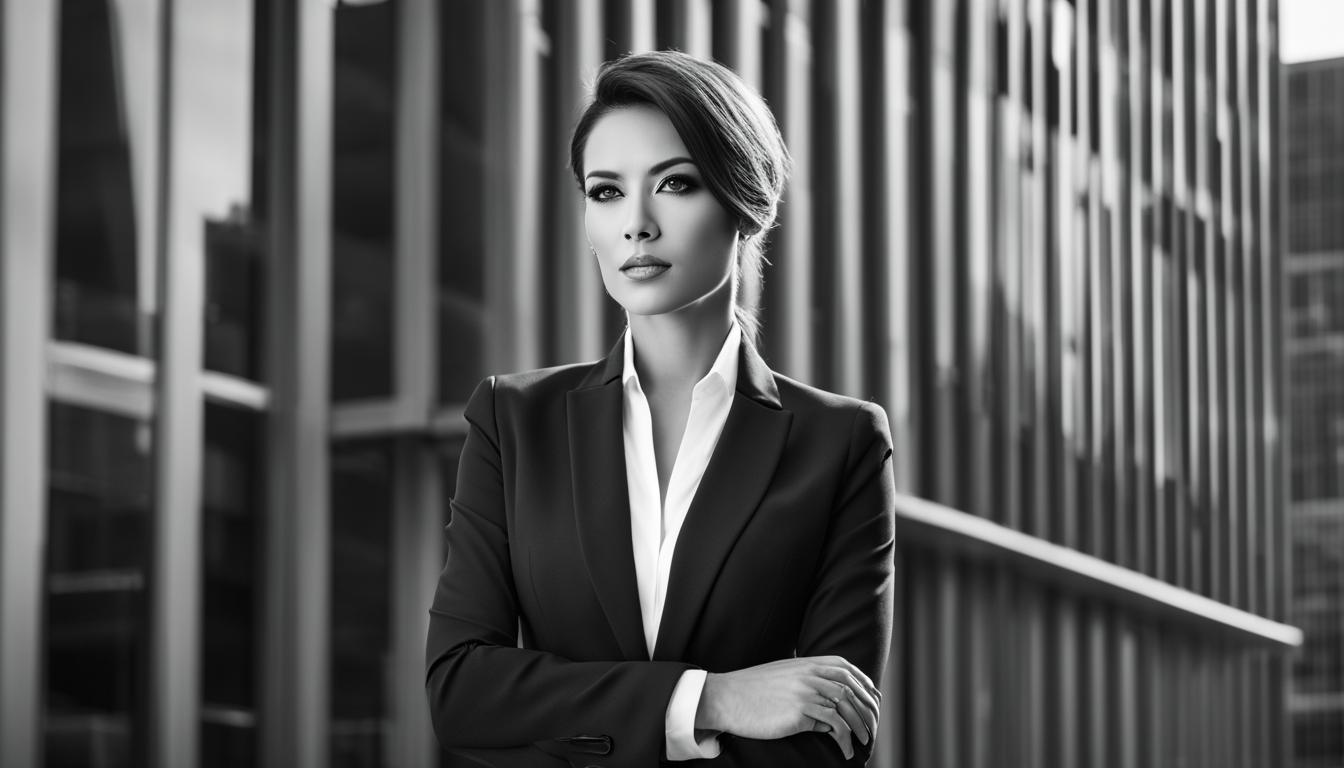Lighting is a fundamental aspect of photography, especially when it comes to capturing stunning portraits. Understanding the different elements of portrait lighting, such as the key light, fill light, and hair light, can elevate your photography skills. These lighting techniques are essential for shaping the subject, filling in shadows, and adding depth to the image. Whether you’re shooting in a studio or using natural light, mastering portrait lighting is crucial for creating impactful and visually pleasing portraits.
Key Takeaways:
- Introduction to portrait lighting and its role in photography
- Understanding the key light, fill light, and hair light
- The importance of mastering portrait lighting for impactful portraits
- Shaping the subject and adding depth with key, fill, and hair lights
- Relevance of portrait lighting in different shooting environments
What is a Key Light?
The key light serves as the main light source in a portrait lighting setup. It plays a crucial role in illuminating the subject’s face and shaping their features. As the primary light in the setup, the key light sets the overall intensity and direction of the lighting.
Positioning the key light is essential to achieve the desired look and enhance the subject’s facial features. It can be placed to the side, above, below, or straight-on the subject, depending on the desired effect. By adjusting the angle and intensity of the key light, we can create different moods and emphasize specific areas of the subject’s face.
Main Characteristics of Key Light:
- Main light source in a portrait lighting setup
- Provides illumination to the subject’s face
- Sets the overall intensity and direction of the lighting
- Can be positioned to the side, above, below, or straight-on the subject
Proper positioning and lighting intensity of the key light are crucial for achieving the desired look and defining the subject’s facial features.
When using the key light, we need to ensure that it highlights the subject’s face effectively while avoiding harsh shadows or overexposure. Experimenting with different positions and modifiers, such as diffusers or reflectors, allows us to create the desired lighting effect and enhance the subject’s natural beauty.
By mastering the art of positioning the key light, we can bring out the best in our subjects and capture stunning portraits that showcase their features in the most flattering way.
Lighting Setup Example:
| Position | Effect |
|---|---|
| Side Lighting | Provides dimension and depth to the subject’s face |
| Above Lighting | Highlights cheekbones and creates a dramatic effect |
| Below Lighting | Produces a more mysterious or dramatic look |
| Straight-On Lighting | Offers a classic and evenly lit look |
Positioning Your Key Light
Proper placement of the key light is essential in achieving the desired lighting effect for your portraits. To start, position the key light close to the subject but out of the frame of the image. This ensures that the light source is not visible and does not distract from the main subject.
A common starting point for key light placement is at a 45-degree angle to the right of the camera. This angle helps to create dimension and depth in the image, adding a natural and flattering look to the subject’s face. However, it’s important to note that the exact position of the key light may vary depending on the desired pose and lighting effect you want to achieve.
When positioning the key light, consider using a modifier such as a softbox, umbrella, or beauty dish. These modifiers can help to diffuse the light and create softer shadows, resulting in a more flattering and natural look. Experiment with different modifier placements to find the one that works best for your desired effect.
It’s also important to be mindful of harsh shadows that may be created by the key light. Harsh shadows can detract from the overall quality of the portrait. To avoid this, pay attention to the distance between the key light and the subject, as well as the angle of the light. Adjust the position and intensity of the key light as needed to minimize harsh shadows and create a balanced lighting setup.
| Key Light Positioning Tips |
|---|
| Position the key light close to the subject, but out of the frame |
| Start with a 45-degree angle to the right of the camera |
| Experiment with different modifiers to achieve desired lighting effects |
| Be mindful of harsh shadows and adjust light position and intensity accordingly |
By mastering the art of key light placement, you can create stunning portraits with beautiful lighting that enhances your subject’s features while avoiding harsh shadows. Experiment with different positions, angles, and modifiers to achieve the desired look and bring your portraits to life.
What is a Fill Light?
In portrait photography, a fill light is a crucial element for achieving balanced lighting and minimizing harsh shadows. The fill light serves the purpose of filling in the shadows created by the key light, without adding excessive shadows of its own. Its primary role is to soften the overall lighting and ensure that all areas of the subject are properly exposed.
There are various sources that can be used as fill lights, depending on the desired effect and available equipment. These include:
- Reflectors: Reflectors bounce light back onto the subject, effectively filling in the shadows. They come in different colors and materials, allowing you to adjust the warmth or coolness of the fill light.
- Additional Strobes: Another strobe can be positioned to provide supplementary light to fill in the shadows. This allows for more control over the intensity and direction of the fill light.
- Walls and Ceilings: When shooting indoors, you can utilize the surrounding walls and ceilings to bounce light and create a soft fill. This is particularly useful in small spaces where setting up additional lighting equipment may be challenging.
- Clothing: The subject’s own clothing can act as a fill light source if it is light-colored and reflective. This can help fill in shadows around the face or body, providing a natural and subtle fill light effect.
The positioning of the fill light depends on the light source used and the desired outcome. It can be placed near the camera or slightly off to the side, depending on the direction of the key light and the desired effect on the subject’s face. Experimenting with different positions and angles will allow you to find the most flattering and balanced fill light setup for your portraits.
Remember, the fill light is essential for achieving a well-lit and evenly exposed portrait, ensuring that the subject’s features are properly defined and that no distracting shadows are present.
Using a fill light can make a significant difference in your portraits, creating a more polished and professional look. It helps to balance out the shadows while maintaining the desired lighting effect. Keep in mind that the fill light should never be as bright or dominant as the key light, as its purpose is to enhance the lighting rather than take center stage.
What is a Hair Light?
A hair light is an essential component of portrait lighting that adds a touch of magic to your images. It is a dedicated light source that specifically targets the subject’s head, illuminating the hair from above and behind. By doing so, it creates depth in the image, separates the subject from the background, and adds visual interest to the overall composition.
To position the hair light correctly, it should be placed directly above and slightly behind the subject’s head. This positioning ensures that the light accentuates the hair without spilling onto the subject’s face. Using a boom stand is recommended, as it allows for flexible and precise adjustment of the hair light’s placement.
When it comes to equipment, there are various options to consider for your hair light setup. A popular choice is a strobe or speedlight with a snoot or grid attachment, which helps to control the direction and spread of the light. This ensures that the hair light illuminates the subject’s hair without causing unwanted spill or reflections.
Creating a visually captivating portrait often relies on the details, and the hair light plays a crucial role in achieving that desired effect. By mastering the art of positioning and utilizing the right equipment, you can elevate your portrait photography to new heights, capturing images that truly stand out.

| Benefits of a Hair Light | Recommended Equipment |
|---|---|
|
|
What is a Rim Light?
A rim light is a crucial element of portrait lighting that adds depth and separation from the background. It involves placing a light source behind the subject, illuminating the back and creating a stunning “rim” of light that outlines their body. The rim light is especially useful when the background color is similar to what the subject is wearing, as it helps to separate them and prevent them from blending into the background.
The positioning of the rim light is essential for achieving the desired effect. It can be placed behind and to the side of the subject or directly behind them, depending on the desired outcome. Experimentation with different placements will enable you to create unique and visually striking portraits.
To shape and enhance the rim light, various modifiers can be used. Some recommended modifiers include small strobe reflectors, beauty dishes, snoots, barndoors, and gels. These modifiers allow you to control the direction and intensity of the light, enhancing the overall impact of the rim light in your portraits.
What is a Side Light?
In portrait photography, a side light is a technique where light sources are positioned on either side of the subject to create drama and enhance the character of their face. The side light sweeps across the face, gradually getting darker as it goes, which can reveal the skin’s imperfections and bring depth to the image. This lighting technique is particularly effective for male portraits, emphasizing their facial features and adding a touch of masculinity.
The angle and intensity of the side light can be adjusted to achieve the desired effect. A low lighting angle creates long shadows and adds a sense of mystery, while a higher angle can reduce shadows and provide a softer look. The shadow intensity can be controlled by adjusting the distance and power of the side lights.
For a more focused and dramatic lighting effect, grids can be used on the side lights. These grids help to restrict the spread of light, allowing for precise control over the lighting direction and preventing unwanted spill onto the subject or background.
“Side lighting adds a unique flair to portraits, bringing out the subject’s character and creating captivating visuals.” – Professional Photographer
By experimenting with different angles, shadow intensities, and the use of grids, photographers can master the art of side lighting and create stunning portraits that evoke emotion and capture the viewer’s attention.
| Benefits of Side Lighting in Portraits: |
|---|
| Creates drama and enhances facial features |
| Reveals the skin’s imperfections |
| Adds depth and dimension to the image |
| Allows for creative control over shadow intensity |
| Provides a more focused and dramatic lighting effect with the use of grids |
What is a Background Light?
A background light is an integral component of a well-rounded lighting setup, particularly when capturing larger scenes. It serves the purpose of illuminating the background and eliminating unwanted shadows, resulting in a more balanced and visually appealing image. By properly lighting the background, you can create separation between the subject and the background, adding depth and dimension to the overall composition.
Illuminating the Background
The primary function of a background light is to illuminate the background itself. By providing a focused source of light, you can ensure that the background is well-lit and properly exposed. This helps to draw attention to the subject and create a more visually engaging image. The positioning and intensity of the background light depend on the desired effect you want to achieve and the size of the scene.
Eliminating Unwanted Shadows
In addition to illuminating the background, a background light also plays a crucial role in eliminating unwanted shadows that may appear on the background. By strategically placing the light source, you can effectively minimize or eliminate any undesirable shadows that could detract from the overall composition. This helps to create a more even and consistent lighting throughout the image.
Lighting Setup for Large Scenes
When shooting larger scenes, such as group portraits or expansive landscapes, a background light becomes even more essential. It helps to ensure that the entire background is adequately lit, regardless of its size or distance from the subject. By properly illuminating the background, you can maintain a balanced exposure and prevent any areas from appearing dark or underexposed.
When setting up a background light for large scenes, consider the size and layout of the area you’re photographing. Experiment with different positions and intensities to achieve the desired effect and create a visually pleasing image. It’s important to strike a balance between lighting the background and maintaining the focus on the subject.
| Benefits of a Background Light | Considerations |
|---|---|
| Creates separation between subject and background | Positioning of the background light |
| Eliminates unwanted shadows | Intensity of the background light |
| Adds depth and dimension to the image | Size and layout of the scene |
| Ensures balanced exposure in larger scenes |
A background light can significantly enhance the overall composition of your photographs by illuminating the background and eliminating unwanted shadows. By implementing a well-thought-out lighting setup that includes a background light, you can create visually stunning images with depth and dimension. Experiment with different positions, intensities, and scene sizes to achieve the desired effect and capture captivating photographs.
Lighting for YouTube Videos
When it comes to creating captivating YouTube videos, lighting plays a crucial role in enhancing the visual quality and engaging your audience. One effective lighting technique that can elevate your videos is the three-point lighting technique. This technique involves using three different lights strategically placed to create a three-dimensional look and control shadows and depth in the video.
Key Light: The key light is the primary light source and should be positioned in front of you, slightly off to one side. This light helps to illuminate your face and provide the main source of light in your video.
Fill Light: The fill light is positioned on the opposite side of the key light and helps to soften the shadows created by the key light. It balances the overall lighting and ensures that there are no harsh shadows on your face.
Backlight: The backlight is placed behind you, slightly above and pointing towards you. It helps to separate you from the background and adds depth to your video.
To achieve a soft and flattering light, you can use reflectors, diffusion material, or bounce the light off walls or ceilings. This creates a soft light that is ideal for YouTube videos, making your appearance more appealing and professional.
Now, let’s explore a color-by-numbers approach for lighting interviews in YouTube videos:
- Position your key light slightly off to one side, ensuring it illuminates your face evenly.
- Place the fill light on the opposite side of the key light to fill in any shadows and provide balanced lighting.
- Position the backlight slightly above you to create separation from the background.
- Adjust the intensity of each light until you achieve the desired look and feel for your interview.
By following this three-point lighting technique and incorporating soft light, you can create high-quality and visually appealing YouTube videos that keep your viewers engaged. Experimenting with different lighting setups and techniques will help you find the perfect lighting style that aligns with your content and personal brand.
| Key Light | Fill Light | Backlight |
|---|---|---|
| Positioned in front and slightly off to one side of you. | Placed on the opposite side of the key light to fill in shadows. | Positioned behind and slightly above you to separate you from the background. |
3 Point Film Lighting Kits
In the world of filmmaking and photography, having the right lighting setup is essential to capture stunning visuals. One popular lighting technique used by professionals is the 3 point lighting setup. This setup consists of three key elements: the key light, fill light, and backlight. By strategically placing these lights, you can add dimension, depth, and drama to your scenes.
When it comes to choosing a 3 point lighting kit, there are numerous options available in the market. These kits include all the necessary lights and accessories to create a professional-grade lighting setup. Whether you’re a novice filmmaker or an experienced photographer, investing in a quality 3 point lighting kit can significantly enhance the visual quality of your films and photographs.
Key Light:
The key light serves as the primary light source in the setup. It provides the main illumination and sets the overall tone of the scene. Common key light options include LED lights and strobes, which offer adjustable intensity and temperature control.
Fill Light:
The fill light helps to soften the shadows created by the key light, balancing the overall lighting in the scene. LED lights and continuous lighting kits are popular options for fill lights, as they provide a soft and diffused light source.
Backlight:
The backlight, also known as the hair light, is placed behind the subject to create separation and depth. It adds a subtle glow around the subject’s head or body, highlighting their contours and adding visual interest. Backlights can be achieved using LED lights or small strobes with modifiers.
When shopping for a 3 point lighting kit, it’s important to consider your budget and specific needs. There are budget-friendly options available, such as affordable LED light kits, that offer excellent value for money without compromising on quality. It’s recommended to read reviews and compare different brands to find the best option for your requirements.
Having a reliable and well-equipped 3 point lighting kit is invaluable for any filmmaker or photographer. It allows you to have full control over the lighting in your scenes, creating visually captivating imagery that captures the essence of your subject. So, whether you’re shooting a short film, a product showcase, or a portrait session, a 3 point lighting kit is a must-have for any aspiring visual artist.
Conclusion
Mastering the art of portrait lighting is essential for any photographer. Understanding the role and positioning of key light, fill light, hair light, rim light, side light, and background light can help you create dynamic and visually stunning portraits. Each element of portrait lighting plays a specific role in shaping the subject, controlling shadows, and adding depth and dimension to the image.
Experimenting with different lighting setups and techniques will allow you to develop your own unique style and capture portraits that truly stand out. Whether you’re shooting in a studio or using natural light, the proper use of portrait lighting can elevate your photography skills and create impactful and visually pleasing images.
So go ahead, grab your camera and start experimenting with portrait lighting. Explore the different lighting setups and techniques mentioned in this article to find what works best for you. With practice and perseverance, you’ll be able to master the art of portrait lighting and create portraits that truly shine.
FAQ
What is a Key Light?
The key light is the primary light source in a portrait lighting setup. It is the main light that illuminates the subject’s face and shapes their features. The key light is usually the brightest light in the setup and sets the overall intensity of the lighting.
How should I position the Key Light?
The key light should be positioned close to the subject, but out of the frame of the image. The common starting point for key light placement is at a 45-degree angle to the right of the camera. However, the exact position may vary depending on the desired pose and lighting effect. It is important to consider the modifier and positioning of the key light to avoid harsh shadows on the subject’s face.
What is a Fill Light?
The fill light is used to fill in the shadows created by the key light without adding harsh shadows of its own. It helps to soften the overall lighting and balance the exposure in the image. There are various sources that can be used as fill lights, including reflectors, additional strobes, walls and ceilings, and even the subject’s clothing. The positioning of the fill light depends on the light source used and the desired outcome.
What is a Hair Light?
A hair light is a light source that is specifically used to illuminate the top of the subject’s head, creating depth in the image. It helps to separate the subject from the background and adds visual interest. The hair light should be positioned directly above and slightly behind the subject’s head, ensuring that it doesn’t spill onto the subject’s face. Using a boom stand is recommended for positioning the hair light effectively.
What is a Rim Light?
A rim light is a light source placed behind the subject to cast light on the back, creating a “rim” of light around their body. It is used to separate the subject from the background, especially when the background color is similar to what the subject is wearing. The rim light should be positioned behind and to the side of the subject or directly behind, depending on the desired effect. Various modifiers, such as small strobe reflectors, beauty dishes, snoots, barndoors, and gels, can be used to shape and enhance the rim light.
What is a Side Light?
A side light is positioned on either side of the subject to create drama and enhance the character of the face. It sweeps across the face, gradually getting darker as it goes, which can reveal the skin’s imperfections. Side lighting is particularly effective for male portraits. The angle and intensity of the side light can be adjusted to achieve the desired effect. Using grids on side lights can help create a more focused and dramatic lighting effect.
What is a Background Light?
A background light is used to illuminate the background and eliminate unwanted shadows, creating a more balanced and visually appealing image. This is particularly useful when shooting larger scenes. The positioning and intensity of the background light depend on the desired effect and the size of the scene. Properly lighting the background helps create separation between the subject and the background, adding depth to the image.
How can I use Three-point lighting for YouTube videos?
The three-point lighting technique can be used effectively in YouTube videos, especially for interviews or vlogs. By using the key light, fill light, and backlight, you can create a three-dimensional look and control the shadows and depth in the video. Soft light is desirable for YouTube videos, and using reflectors, diffusion material, or bouncing light can achieve this effect. Understanding how to apply three-point lighting to YouTube videos allows you to create high-quality and visually appealing content.
Are there specific lighting kits for three-point film lighting?
Yes, there are various 3 point lighting kits available for filmmakers and photographers. These kits typically include the key light, fill light, and backlight, providing a complete lighting setup. Budget-friendly options include LED lights, strobes, and continuous lighting kits. The choice of lighting equipment depends on individual preferences and specific needs. Investing in a quality 3 point lighting kit can significantly enhance the visual quality of your films and photographs.




